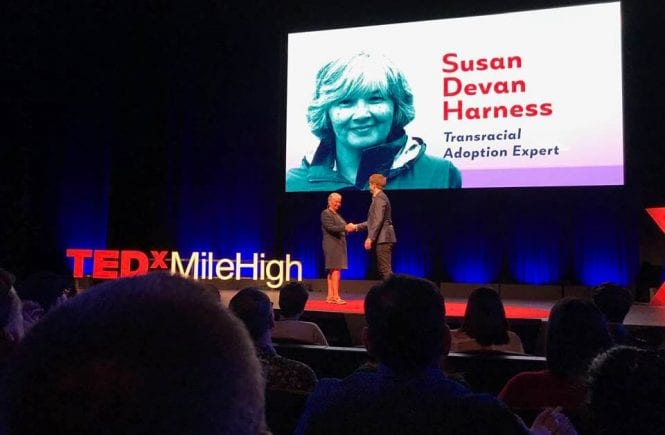FORT COLLINS, Colo. – American Indian trans-racial adoptees often find themselves at the intersection of belonging and not belonging in today’s society. Colorado State University cultural anthropologist Susan Harness explored issues of ethnic belonging, social hierarchy and social memory and their impact on adult American Indian trans-racial adoptees – like herself – who were adopted in the 1950s and 1960s. Although these adoptees experienced being “Indian” and being “White,” they are not wholly accepted by either ethnicity.
Harness’ research takes a keen look at colonization on the home soil of American Indians and their historic placement in U.S. social hierarchy during this little-known chapter of involuntary adoption in America. Her research is chronicled in her book, “Mixing Cultural Identities Through Transracial Adoption: Outcomes of the Indian Adoption Project (1958-1967).”
“As trans-racial, trans-national and trans-ethnic adoptions become increasingly common, a dialogue of outcomes and issues is critical. It’s important to understand where feelings of isolation or being on the outside looking in come from. These are very real perceptions that affect many adoptees over their entire life,” Harness said.
The Indian Adoption Project, a handshake agreement between the BIA and the Child Welfare League, [www.cwla.org] ran from 1958-1967 in the United States. The project was designed to save American Indian children from impoverished economic and social conditions while giving them access to resources afforded to the Euro-American middle class.
By 1972, more than 30 percent of American Indian children were placed into non-Indian homes.
As a master’s student in Colorado State’s Department of Anthropology, Harness conducted research studying adult American Indian trans-racial adoptees and discovered a myriad of issues surrounding adoption, but it also shed light on what it means to be Indian living in a white world. Harness studied the challenges adoptees face when they try to return home after being raised in a white world.
Harness, a member of the Salish-Kootenai Tribes from the Flathead Lake area in western Montana, was adopted and removed from the reservation by Euro-American parents in 1960. As a young adult, she tried unsuccessfully to reconnect with the people on the reservation to learn about her culture and history.
“I realized the importance of a social network when I was unable to get employment, or make contact with my birth family. I realized that lacking a social network, as well as cultural knowledge really put me at a disadvantage – I was seen as an outsider.”
Harness examined the structures that allowed or prohibited perceptions of belonging and not belonging for American Indian adoptees placed in Euro-American families. Her study revealed that when American Indian children have been removed from their original ethnic group and placed within a family whose Euro-American membership is unquestioned in the dominant group, conflicted feelings of identity result, leading to variously diagnosed pathologies. These pathologies until recently have hidden the contributing role of ethnic membership and social position. This study illuminated the possibility that as American Indian trans-racial adoptees reach out to one another, they are constructing a new social class of their own, with their own criteria of membership.
“Meeting in small groups, or through the Internet, American Indian trans-racial adoptees are able to create networks that benefit members of the group. Sometimes it’s just listening to one another and hearing similar stories of what it’s like to be an American Indian trans-racial adoptee; for others it’s becoming familiar with meanings behind ceremony and social interaction. Yet others provide assistance and support in more concrete ways. For instance, helping other adoptees navigate the legal system to open previously sealed records that allows adoptees to establishing kinship and blood quantum for tribal enrollment purposes,” Harness said.
Harness is a researcher associate in CSU’s Tri-Ethnic Center for Prevention research based out of the College of Natural Sciences. She is the field director for the American Indian Youth Drug and Alcohol Research Study.



